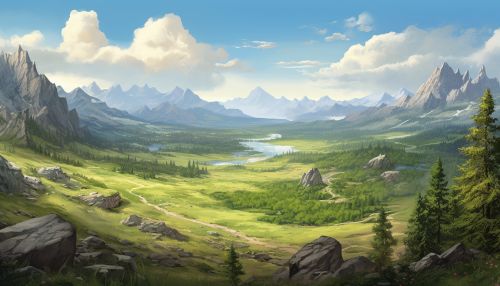Mormon Corridor
Introduction
The Mormon Corridor is a region in the Western United States that was settled by members of The Church of Jesus Christ of Latter-day Saints (LDS Church) in the late 19th and early 20th centuries. The corridor extends from southern Idaho through western Wyoming, Utah, eastern Nevada, and northern Arizona, into parts of southern California and New Mexico. This region is also commonly referred to as the "Mormon Belt" or "Jell-O Belt" due to the high concentration of LDS Church members and the cultural influence of the church in these areas.


History
The establishment of the Mormon Corridor can be traced back to the early days of the LDS Church, when its members were seeking a place to practice their religion free from persecution. The church's founder, Joseph Smith, had initially established a community in Nauvoo, Illinois, but after his death in 1844, the church members were driven out by local residents. Under the leadership of Brigham Young, the church members embarked on a mass migration westward, a journey that is now known as the Mormon Pioneer Trail.
Settlement and Expansion
Upon reaching the Salt Lake Valley in 1847, Brigham Young declared, "This is the place," and the Mormons began to establish settlements throughout the region. The initial settlements were primarily agricultural, with the settlers planting crops and raising livestock to sustain their communities. Over time, these settlements expanded and diversified, with the establishment of industries such as mining, manufacturing, and commerce.
Cultural Influence
The cultural influence of the LDS Church is evident throughout the Mormon Corridor. This is reflected in the architecture of the buildings, the layout of the towns and cities, and the social and cultural practices of the residents. The church's emphasis on family, community, and self-reliance has shaped the character and identity of the region.
Demographics
The Mormon Corridor is home to a significant population of LDS Church members. While the exact percentage varies from place to place, in some areas, such as Utah, the majority of the population identifies as LDS. This has resulted in a unique demographic profile, with a higher than average number of families, a lower than average age, and a higher than average birth rate.
Economy
The economy of the Mormon Corridor is diverse, with sectors such as agriculture, mining, manufacturing, and services playing significant roles. The region is also home to several large corporations that were founded by or have strong ties to the LDS Church, such as Deseret Management Corporation and Bonneville International.
Education
The LDS Church has a strong emphasis on education, and this is reflected in the high number of educational institutions in the Mormon Corridor. These include both public and private schools, as well as higher education institutions such as Brigham Young University and the University of Utah.
